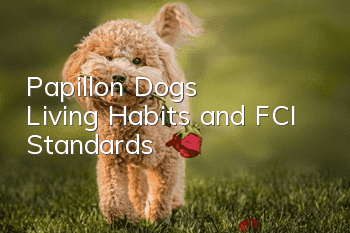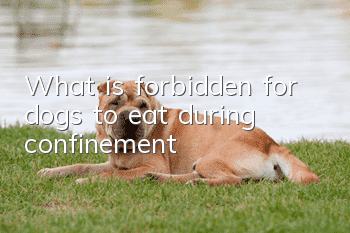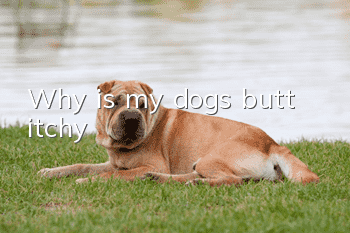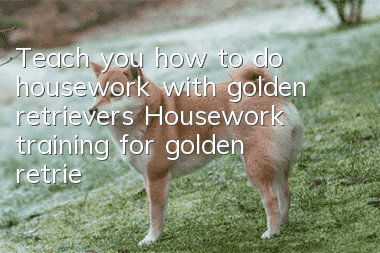Papillon Dog’s Living Habits and FCI Standards

Papillon dogs are extremely easy to get close to and are the most delicate and intelligent dog breeds. Happy, alert, friendly. He is physically stronger than he looks and likes outdoor sports. This dog is very possessive of its owner and will be jealous of third parties. Papillon dogs are lively and active. They are bold and flexible, enthusiastic and docile towards their masters, but indifferent to strangers.
Papillon
With a high IQ (equivalent to a five or six-year-old child), it is a member of the top IQ in the pet dog category. Generally speaking, its average IQ level is similar to that of Labrador, Shetland Sheepdog and Rottweiler, slightly lower than the famous high-IQ dogs - Border Collie, German Shepherd, VIP, etc., but better than Schnauzer. , Satsuma, etc. must be smart.
The butterfly dog was also called the "squirrel snipe dog" in the past. The tail raised toward the back resembles a squirrel. Papillon dogs are very approachable and intelligent dogs.
FCI number: 77
FCI Group: Group 9: Companion Dogs and Toy Dogs Group
Height: The shoulder height of male butterfly is 7.9-11.0 inches (20.0-28.0 cm), the shoulder height of female butterfly is 7.9-11.0 inches (20.0-28.0 cm)
Weight range: Male butterflies weigh 8.8-11.0 pounds (4.0-5.0 kg), female butterflies weigh 6.6-8.8 pounds (3.0-4.0 kg)
Head
(Head, face, eyes, ears, nose, mouth, muzzle, jaw, teeth)
Head: The size is in harmony with the body, but lighter and shorter than that of similar large and medium-sized dogs.
Skull: Not too round when viewed from the side or from the front, sometimes with traces of wrinkles extending toward the center.
Stop: obvious depression. In larger dogs, the depression is less pronounced but still distinct; in smaller dogs, the depression is well defined and does not interrupt abruptly.
Nose: Small, black and round, but slightly flat at the top.
Muzzle: Shorter than the skull, slender, pointed but not very hollow at the sides; must not be rolled up. The bridge of the nose is straight.
Lips: Heavy in color, thin and tight.
Jaws and Teeth: Very strong, tight and standard. The tongue should not be exposed; if it can be seen or cannot be retracted when touched by hand, it is a fault.
Eyes: Large, naturally open, shaped like large almonds, not protruding, and located low on the head. The inner corners of the eyes join the skull and muzzle. The color is dark and expressive; the eyelids are heavily colored.
Ears: Very thin but hard. Whether it is oblique ears or hanging ears,When tested by hand, none of the cartilage should end at the tip of the ear. The ears are located at the far end of the back of the head, and the distance between the ears is far apart, so the shape of the skull appears slightly rounded. The pendant ears are called Falleni (sound). When at rest, the ears are high, significantly higher than the eye line, hanging and very flexible. Covered with wavy hair, the hair can be very long, which makes the dog look beautiful. Those with erect ears are called Papilon (sound). The ears are tall, and the outer ear is naturally open and turned inward; the inner edge of the outer ear forms an angle of 45 degrees with the horizontal line. The ears must not point upward, i.e. like a Spitz type ear, as this will be a disqualification. There are fine wavy hairs inside the outer ear. The longest hair will exceed the edge of the limit; conversely, the outside of the face is covered with long hair, extending naturally to the edge of the ear. Crossing these two breeds often produces ears that are semi-erect with droopy tips; such mixed ears are a major fault.
Torso
(Neck, chest, ribs, waist and back, front of body, skin)
Neck: Moderate in length, slightly arched at the nape.
Topline: Not too short or arched, nor saddle-shaped, but neither flat.
Loin: Firm, slightly arched.
Chest: wide, naturally downward. The circumference of the ribcage at the back two ribs should be the same as the height to the withers. The ribs are naturally arched.
Abdomen: Slightly straight.
limbs
(Forequarters, shoulders, upper limbs, pastern joints, pasterns, soles of feet, hindquarters, thighs, hocks, joints and hock nails)
Limbs: Legs are straight, strong, and thin. The dog should show no signs of being enlarged; the legs should be parallel when viewed from behind or from the front.
Shoulders: Well developed and naturally integrated with the body. Upper arm: The same length as the shoulder blade, with an appropriate angle in front of it, a natural joint, and a natural joint with the body.
Pastern: obvious shape. Hock: Angle standard.
Feet: Very long, known as "hare's feet", pads. The toes should be strong, preferably black in dogs with brown or white coats (if a white dog or a dog with white feet has white toes, this will not be considered a fault if the other colors of the dog are appropriate). The toes are strong with hard pads and are well covered with hair extending in a pointed shape to the front of the toes. tail
Tail: The position is very high, very long, and the tail hair is rich and becomes a cute feather shape. When exercising, it will be raised and bent in a straight line with the back, and the tip of the tail can touch the back; it cannot be curled or lie flat on the back.
Gait/movement
Proud, free, calm and elegant. Coat
The coat is rich, smooth and wavy with no undercoat(Cannot curl to make it messy), not soft but durable to the touch, with a silky feel. The hair is straight, very fine, slightly curly and wavy. The coat appearance is similar to that of the English Toy Spaniel, but is clearly different from that of the Pekingese Toy Spaniel; at the same time, the coat should not bear any resemblance to that of a Fox-type dog. The hair on the face, muzzle, front of legs and under the hocks is short. The coat on the body is of medium length. The neck becomes longer and resembles a quill-like chest decoration. Starting from the chest, it becomes shorter in a wavy pattern, forming feathers on the ears and the back of the front legs; the soft fur on the back of the thighs forms a "breeches" shape. There may be small tufts of hair between the toes, which can be slightly extended if the extension makes the foot look less bulky and more beautiful.
Color
Where the background color of the coat is white, any other color is permitted. The color of the body and legs must be predominantly white. The white on the head is best extended in the form of more or less broad white spots. White spots may be present on the lower part of the head, but a predominantly white head is a fault. In any case, the lips, eyelids and mainly the nose must be adequately pigmented.
Dimensions and weight
Height to withers: approximately 28cm.
Weight: Two categories: 1) Both sexes are less than 2.5kg; 2) Males are 2.5kg to 4.5kg; females are 2.5kg to 5kg; the minimum weight is 1.5kg.
Disqualification conditions
Faults: Any deviation from the above points will be considered a fault, and any dog that is obviously abnormal in body or behavior will be disqualified. Skull flat, apple-shaped and raised like an English toy dog; stop too prominent; nose not black; muzzle arched; lips faded; jaws, especially the lower jaw, protruding; eyes small, too round, prominent; light in color; normal The dog appears white when viewed from the front; the eyelid edges are faded; the back is arched or saddle-shaped; the tail is curled, placed on the back, and falls to the sides (referring to the tailbone rather than the feathers, which tend to fall in bunches due to their length) The front legs are arched and the pastern joints are knobby. One or two dewclaws on the hind legs are a disqualification and a beauty fault. Therefore, it is recommended to remove it: the feet are turned in or out; the nails do not touch the ground; the coat is short, soft or loose; the hair is straight or straight itself; the wool-like coat; the undercoat suggests a hybrid with a fox. ; Pink or pink-spotted nose; Excessive protrusion, supra or under protrusion of the jaw, and the incisors cannot touch each other.
- Why do dogs have hot ears?
- What happens when a golden retriever wakes up and walks lamely? A must-read for novice pet owners!
- When to potty train your dog? Are you ready?
- The best age and precautions for dog neutering
- How to train a greyhound to pinch?
- What kind of dog cannot be bathed temporarily?
- How do golden retrievers avoid heat stroke in summer? Tips for golden retrievers to avoid heatstroke!
- Why do dogs like to lick everywhere? It turns out that dog licking also has different meanings!
- How should an office worker raise a dog?
- What you need to know if you have pets at home: signs of heat stroke and how to prevent it



